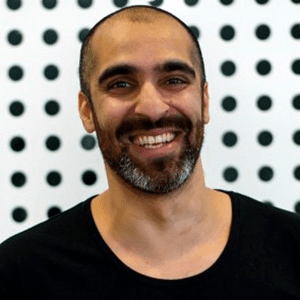

#60: Great leadership is a skill that must be learned
Psychologically safe leadership is a whole new approach that can be learned in time, if you want to unleash the leader you have always wanted to be this podcast is for you.
Dave Sewell, Executive Leadership Coach shares his perspective about the importance of leaders putting psychological safety at the core of everybody’s development. What stops you as a leader getting the best outcomes and working together with a common goal? Stress can be a major inhibitor to great performing teams and inclusive cultures.
Leaders need to be the calm in the storm. By being able to hold a place of psychological safety, will give you the skills to face your fears and have those difficult conversations with people.
Where do leaders start? Dave shares the 3 steps that a leader can take to work towards psychological safety within the workplace. The leader shows the way, but it’s everyone’s responsibility.
Stephanie: Welcome to TEC Live, Stephanie Christopher here, CEO of the Executive Connection. We connect leaders with a trusted network of people who help them succeed.
Leah: Between the UK and Europe, you talk about the pond, right?
Stephanie: Yeah.
Leah: Or is that the UK and the US, the pond? But between Australia and New Zealand, you call it the ditch.
Stephanie: It’s a great ditch. And so today my special guest is coming to us from across the ditch, in fact, all the way from Christchurch. So I’m thrilled to be talking to Dave Sewell, who is the owner and founder of DS Psychological Safe Leadership, which is a neuro leadership training and business coaching organisation. Dave’s passionate about making a real impact in developing the capability of leaders in mid to large organisations, right in our wheelhouse as well. Dave’s also about helping and educating executive and management teams to develop a safe leadership approach to taking care of those around them. Dave Sewell, welcome to TEC Live.
Dave: Thank you for having me. Honestly, it’s an absolute pleasure and a privilege to be here. Thank you.
Stephanie: I love it. Thank you. We don’t normally get this sort of speech at the beginning, Dave, you are now our very favorite TEC Live guest. Certainly our favorite one from Christchurch. So a question from you, if I’m a leader running a business in some very strangely fast moving times, I’ve got a lot on my mind, is talking about safety a little bit soft?
Dave: Really good question. And I would say to you, as a leader in these stressful times, if you have to have a conversation with someone within your team that is either not performing or his attitude is not quite aligned with your values or the behaviours not becoming, how easy do you find having those conversations?
Stephanie: Hate them.
Dave: I would challenge them, they’re the hardest things you’ll ever do in your role as a leader. So why are we calling this stuff soft?
Stephanie: Okay, so then the extrapolation from that is those conversations are important because they’re all about outcomes, the business working together towards a common goal and vision, and that’s how you’re going to get to where you want to go as a leader.
Dave: Yeah, absolutely. But what stops you doing that? What stops, as a leader, you bringing everybody together to all be paddling and striving in that same direction? What’s stopping you doing that? Why are so many companies not that functional?
Stephanie: What do you see? What’s your answer to that question?
Dave: Fear.
Stephanie: Oh yeah, go on. Fear of what?
Dave: It’s the fear of the reaction of people around the leader when the leader is trying to communicate something. So rather than being knocked down for dare suggestion that we’re going to tackle this marketplace or we’re going to go down this direction with the company because this is where we see the future with this company. And imagine doing that in front of a leadership team that looks at you out the corner of their eyes or rolls their eyes or tuts or even comments around the likes of, ‘Oh my God, where’s he taking this or where is she taking us now?’ It’s really difficult because all of those body language signs, all those tuts and where’s he going and questioning, challenges our status in the tribe. And sometimes it’s just too difficult to do that, sometimes we’re just not, depending on the day, not resilient enough to cope with the challenge.
So sometimes as leaders, we often just keep stuff to ourselves, or when it comes to dealing with the sticky issues, we just avoid them completely because the threat of the issue is bigger, potentially bigger in the head than it actually is in reality. But because the brain’s screaming out this is a threat, let’s not go there, we don’t. So actually to behold a psychologically safe space, it’s not just the leader’s responsibility, it’s everybody’s responsibility in an organisation, but the leader has to show the way.
Stephanie: I really like that, it’s the leader showing the way and it’s everybody’s responsibility, so everyone is signing up for it.
Dave: I mean, I define psychological safety as the ability of a person, not a leader, a person to create an environment around them where others can share their ideas, share the criticisms, and even make mistakes free of ridicule and persecution. So that requires everybody within a team, group, organisation to hold that space for everybody to feel safe. And if anyone doesn’t, if anybody is the opposite of psychological safety, which is psychologically aggressive, it just takes one person to be aggressive and the whole rest of the team will not feel safe.
Stephanie: Absolutely.
Dave: So to have safety, you’ve first got to remove aggression.
Stephanie: So this is a question I normally ask towards the end of the podcast, and no Dave, I’m not winding you up, just in case you think it’s almost over. Where do I start as a leader then? Because everything you’re saying makes such good sense, including the extra hours of sleep at night you’re promising me. But where do I start as a leader, if I recognise that a psychologically safe organisation will be happier, more productive, more successful, more empowering, but I know that there’s a few people in there who aren’t going to play ball, where do I start?
Dave: You got to start with yourself. With any situation, this goes down to whether we’re psychologically safe or psychologically aggressive, basically boils down to our reactions to any given situation. So if we let our limbic brain, the brain where our fight or flight and emotional reactions stem from, if we let that limbic brain control our behaviour, we’re not off to a good start. So as a leader, if you want to create a psychologically safe space, quite frankly, you’ve got to control your own shit. You’ve got to control your own emotions. You’ve got to not flip your lid every time you get a curve ball. You need to be the calm in the storm. Now, I’m not saying that you have to switch up your emotions, that’s not what I’m saying at all. I’m saying if a curve ball comes in and it frustrates you, you can feel that frustration and even voice that frustration, but that’s as far as it needs to go.
You still need to hold that calm space in the storm because you are the leader, everyone’s relying on you to stay balanced and make key decisions or the leadership team be able to make key decisions in that storm. But we can’t do that when our fight or flight or our limbic brain is in control, because we go defensive when that goes in control and we get a little bit angry because that’s just how the fight or flight works. And we get a little tense and we become antagonistic to each other, we’re not civil when we’re in that space. So the leaders got to work on their own emotions.
Stephanie: And when you say losing your stuff, it’s also reacting-
Stephanie: No, no, I loved it, but we’re posh over here, we’re not going to say that, but I think it’s also reacting, strong reactions. Yet what about, as a leader, you’ve got so much stuff going on, pressure from stakeholders, maybe pressure from the board, maybe you know stuff that the team doesn’t know about financials or upcoming challenges. Am I hearing you say that the leader has to suppress all that and not show it to the team?
Dave: No, no, absolutely not. The first stage is the leader to hold that calm space, which means they’ve got to be able to regulate their emotions in some way, shape, or form. Now, you take a leader in a good mid-size to large size company and they’ve got the management team, they’ve got the leadership team around them, and the leader has gone, ‘Actually, I need to move into this more safe space.’ But maybe there’s some members of the leadership team that are not in that place yet and they intimidate the leader themselves. So what is a leader supposed to do? How do we break them mold in that? So maybe the leader will need what I call a check in buddy, someone out with that leadership team, out with the work, that they can buddy up to and just vent.
You’ve got to release the emotion, you’ve got to release the frustration and the anger, and God forbid the shame, if you were shamed publicly by other leader, whatever that may be, you’ve got to get that out of your system. So we need someone safe to do that, and it may not be your immediate leadership team in the early days. So it is not about bottling up, it’s about being able to regulate it and have an avenue to vent that stuff so you can stay calm. Because once you can create that calmness to a degree, and it takes time and practice to be fair, then the other leaders can start to model that behaviour. They can see you doing that, and they will, by human nature, they will, if it’s a safe thing to do, they will do it, they will model it and copy it.
Stephanie: I just missed the nuance of you saying that buddy, which I love, that you vent with. I really like that. Did you say that can be someone within the team or it should be someone-
Dave: No.
Stephanie: No, that’s what I thought. That’s what husbands are for.
Dave: And probably out with the company.
Stephanie: Yeah. Yeah.
Dave: So I’ve just been doing, I’m on a road show at the moment in the agricultural community, and one of the things that we’re talking about, although it’s not in the corporate, it’s in the farmers, if there’s one thing in the discussions that came out on the subject around how do … if someone’s going to go into not a great place from a mental perspective, we need someone to check in on them. And so check in buddy actually goes to someone else and says, ‘Hey, how you doing? Just checking in on you, are yeah all right today? What’s been going on? Tell me about your day, et cetera.’ And the reason for that is because if we go into that bad place, that dark hole of depression or getting close to that, or we’re burnt out, exhausted, fried, and we become asocial, separate ourselves from the group.
So we’re not going to go for help when we’re in that bad place, so we need someone like a check in buddy to literally come into our dark place, dark cave and sit with us and just listen to us and then slowly take us out of that. And when a leader is, going back to your original question, if a leader is being swamped because they’re feeling like the board’s hostile towards them and the customers are all complaining and the marketplace is shifting, and we’re dealing with another pandemic, where does that leader go when their immediate team is also in that place and struggling? So it’s good to have this check in buddy out with the organisation and the check in buddy cannot be a partner, it’s not your wife or your husband or your-
Stephanie: There goes my check in buddy, he just got the sack.
Dave: Well it’s not that because generally speaking, where do the main pressures come in our life? They come from work and they come from the family. So it’s good to have them independent, that check in buddy independent of both. Not to say that you don’t talk to your partner, that’s not what I’m saying, but the check in buddy is that independent person that we can just go to and we can talk about anything, absolutely anything. So we need that to express ourselves, so it’s a good idea to have that check-in buddy to just offload and they’ll do the same to you.
Stephanie: I like it. Now, in my experience, a check in buddy can actually be a group of people from outside your organisation, that might be-
Dave: Yeah, absolutely. Absolutely.
Stephanie: … 15 non-competitive people, and you can talk to them.
Dave: And that’s exactly what you guys do. I’ve seen your groups in action and it’s absolutely brilliant. And I’ve seen them emotion around the table in your groups as well, and they just open up. That’s exactly what I’m talking about.
Stephanie: So then, am I right that if, as a leader, you’re determined to drive this psychological safety through the workplace, is a cultural shift, that you would start with your leadership team?
Dave: Yeah, absolutely, absolutely. And the reason for that is because you want the leadership team to model the behaviour, model the mindset that goes behind psychological safety. So that when people see that their leaders are not necessarily judging people by their actions, they’re approaching problems in a kind or supportive place, which means then it gives permission for the team members to do the same for each other, support each other as well as supporting their leader and vice versa.
Human beings learn by modeling, it’s as simple as that. We do it as kids, we model our parents, rightly or wrongly, but we do it anyway, and that’s a big part of our learning. So if the leaders are living it and living psychological safety and actively demonstrating what that means and it shapes their conversations with the team members, then at some point in the future, the team members will take that on board and go, ‘Actually, when the leader talked about, they diffused that horrible situation. Actually I’m going to just store that in my mind because if I ever come across a situation like that, I’m going to copy them and I’m going to do the same thing in the next time I’m in that scenario.’ It’s just what we do. So it’s easier to start from the top and then cascade that through, rather than expecting the team members themselves to embrace this, but then the leaders aren’t actually really-
Stephanie: Absolutely.
Dave: Yeah.
Stephanie: So we were chatting earlier, Dave, before this, about a toxic employee and I know your view and we’ll get to that, but organisations are made up of a group of humans and everyone is human. And tell me about how the leader can deal with the situation, because I talk to a lot of leaders of mid-size businesses and this comes up a lot, but how can the leader deal with a toxic employee or a toxic team?
Dave: Yeah. So the first thing I want to say about this is about the approach, so I’m going to talk about this because I want this sitting in the back of a leader’s mind when they’re thinking about that toxic employees. And I say that with inverted comments because you know my beliefs on that, I don’t believe there’s such a thing as a toxic employee, because here’s why. Nobody lies in bed in the morning, 6:00 AM the alarm goes off and says, ‘Right, today, what am I going to do today? Well, I’ve got that job and I’ve got this job. Yeah, I’ll get that done in the morning. But it’s been a long time since I pissed my boss off.’
Stephanie: Yeah, yeah, yeah. ‘I’m going to make life hell for a few people.’
Dave: ‘Actually that’s a great idea, it’s been months. I think I’m going to go to work and I’m just going to make that guy’s life hell for the rest of this week.’ Now nobody thinks that way. Caveat, maybe psychopaths, less than 1% of the population, they don’t feel so they could potentially do anything and not care. But everybody else, we don’t think that way, we cannot think that way. The sole purpose of the brain is there to aid our survival. Now the brain, it’s responsible for doing lots of stuff in the body, but its sole purpose is to aid our survival. Now in this modern age where we don’t have many, well, in New Zealand, we don’t have many predators, obviously you lot across the ditch, you got plenty-
Stephanie: Yeah, we’ve got snakes, number one.
Dave: Snakes and spiders and crocs, and sharks, you name it. But generally we’re not in fear of our life on a daily basis, from predators. But our brain is still driven to survive, and so for most of us in our day-to-day complicated lives that we lead, that’s about status. It’s about status in our work tribe, status in our family tribe, status in our sports tribe. It doesn’t matter which tribe we feel part of, it’s important for the brain to maintain its status because the brain has not evolved from hunt gatherer times. And if in hunt gatherer times we were actually deemed useless to the tribe, at best we got banished, which then nature took care of us, or at worst, they would just lop our heads off and that would be it. Either way, we’re dead. So in this complicated life that we live in now, although we don’t have that predatory thing to worry about too much, we do have to still feel useful and worthy within our tribes.
So we will never consciously make a decision to go into our tribe and be detrimental to the tribe. It is not a survival strategy. So going back to that so-called toxic employee, those employees are not getting up in the morning to make your life hell. Now, the fact that the outcome of their behaviour is not helpful to you, and if they’re toxic, that means it’s been going on for some time, tells me that the leader’s failing that person and they’re failing that person because that person is screaming for help. There’s something going on with them and they’re not getting the support that they need, because if they’re not behaving in a helpful manner in that tribe, it means that they’ve got stressors going on that’s putting them into a defensive, maybe even aggressive place, that is not being dealt with. And I’ve yet to be proven wrong in that in real life, as in real scenarios.
Stephanie: So if there’s, I can think of examples of where there might be a team or a branch or a country, in a even larger organisation where it would be, ‘Oh, that group is impossible. They fight everything, they talk amongst themselves, you agree to something, and then they’ll go off and do their own thing.’
Dave: Yeah.
Stephanie: So is that just an amplification of the same situation?
Dave: Yeah, yeah, absolutely. And because nobody gets called toxic overnight, it is repeated behaviour that eventually the leaders don’t know what to do with them, so they give them the label of toxicity or toxic, and now it’s a label. Now that the brain’s put a label to it, they can deal with it. Well that person’s toxic, we just need to fire them. Now it doesn’t matter whether it’s … so that’s a behaviour thing or whether we’ve got that office politics, it’s the department’s not getting on together, it’s the same thing. It’s the same thing. So psychologists have got a term for this and they call it defensively aggressive behaviour. And interestingly, the hormone that brings us together, which is called oxytocin, brings us together, so it rewards us for helping each other, also drives defensively aggressive behaviour when we don’t feel safe. And I mean psychologically safe, not psychically safe.
And what happens there is this, so it’ll go something along the lines of say I’m in sales, let’s just take departmental politics. I’m in sales and the boss comes to me and says, ‘Dave, your sales are disappointingly low. You need to pick your game up, get those sales in before the end of this quarter, otherwise mate, your job’s on line.’ So now that’s a direct threat. Or normally what they say is, ‘If you don’t get those sales, or you better get those sales or else.’ And they leave it hanging. So then my mind goes into all of the worst case scenarios that or else means. So now I’m in a defensive place, so I’m going to go out into the marketplace and I’m going to sell, sell, sell, sell, sell, sell, sell, and I’ve now overachieved for the quarter. I’m now safe, but because I’ve got all these sales in, operations wasn’t ready for it.
So now what’s happened is I’ve got all these sales in and all these contracts in, now operations can’t fulfill all my sales orders. I’ve now become aggressive to operations, and this is what they call defensively aggressive behaviour. So because the leader basically threw a stick at me rather than a carrot or supportive, I felt under pressure to perform. So I did what I needed to do to stay off the leaders radar, and as a result of that, I’ve become aggressive to someone else. And that aggression, so they no longer like me, they hate sales now because we’re just putting them under constant pressure and we don’t seem to care. I don’t care because I’m in this defensive place, all I’m caring about is staying off the boss’s radar. So that’s now creating angst between operations and sales, and that’s where the divide happens.
Much better if the boss had said, so how do you overcome that, much better if the leader had said, ‘Okay, look, sales are down, operations, marketing, sales, let’s get together, our sales are low this quarter, we need to do something a little bit different to generate sales. If we manage to do, what could that be? And if we do it, how does that impact all of you?’ And then it’s a collective, marketing, sales and operations, they’re all working together to make things happen, but we’re also prepared for if we’re successful in this initiative, here’s how we’ll actually deliver it. That is a much more inclusive way-
Stephanie: New ways of working with collaboration.
Dave: Yeah.
Stephanie: Okay. So I like your thinking about the motivation and the response from individuals and teams. Let’s just summarise to finish off then, what are the three steps that a leader can take to work towards psychological safety in their workplace?
Dave: Yeah. Okay. First one, like I said before, get on top of their own triggers, their own emotions. And don’t squash them, but understand, take time to understand what actually sends us into a spiral. So I call that the F state. So that state where you get frustrated, frenetic, frantic, forgetful, but a worst case, fearful, that F state. What puts you into that place? What triggers you to go into that place? Understand that, I think start developing strategies to try and not sink into that place when those triggers happen.
Stephanie: Triggers happen, yeah.
Dave: And create that awareness. The next thing is, I would say, is you’ve got to embrace the mindset of everybody is inherently good. If you cannot embrace that mindset, you will never develop a psychologically safe environment. And that’s gone back to nobody’s getting up in the morning to upset somebody, so if somebody’s not performing, has got a poor attitude or career behaviour or unhelpful attitude or unhelpful behaviour from a company’s perspective, get curious. They don’t mean to do that, so there’s something going on with them in this space and time, that is the outcome of which is that poor performance, poor behaviour, poor attitude. So get curious just around what’s going on around them, as opposed to getting stuck on the problem. And really when it comes to providing, another one is to provide support, the third thing is providing gratitude and support.
So as a leader, if we’re seeing good things happening within our teams, let’s acknowledge the good stuff. Now our brain is biased to threat, not good. Brain will ignore good because it’s not a threat. Remember, the brain’s wire to survive, so it’ll get fixated in all the problems. Now, some of us find it easier than others to focus on the good. And for those that find it a challenge, take the time to acknowledge the good stuff that’s going on. Be specific, don’t stand at the front door of the business at five o’clock at night and say, ‘Thank you, thank you, thank you, thank you.’
Stephanie: Well done guys. Great day.
Dave: Yeah, great day. Yeah, no, get very specific with the acknowledgement. Thank you for supporting that person. Thank you for finishing that really difficult project. Thank you for training X, Y, Z person in this role. Get very specific about it. And when you’re providing support to people as well, and you see someone that’s not in a good space, we’re all inherently good, but that behaviour’s not good, so I’m going to approach that person and find out and ask, ‘Hey, what’s up? You’re not firing on all cylinders today. What’s going on around you that’s impacting your ability to do X, Y, Z?’
And when you ask those questions, listen, stop talking, don’t give your brain permission to not even respond. Allow it to process what’s being heard. And as a leader, if we can create that safe environment and we’re showing gratitude and we can also listen and hear everything that is being told to us, we’re already streets ahead of most of the leaders out there. It’s not a huge thing to do to be psychologically safe, sorry, it’s not complicated to create safety, but it’s a long journey depending on the journey we’ve been on and stuff. It takes consistency to create that environment.
Stephanie: So this links in with a number of other TEC Live episodes. I would go back to Mike Logan, the asking leader, which will be 2019. I’d find Trudy McDonald talking about everyone being clear on what their roles are and their own success profiles and their 90 day plans.
Dave: Hugely.
Stephanie: And then the three things that you’ve said about be reflective as a leader and understand what’s going to press your buttons and be prepared to respond to that, and get support from your peers somewhere else outside the organisation. The second one, I love a quote from a colleague of mine from the past, ‘Everybody does the best they can with what they have, so assume that people are inherently good,’ which I think is great. And then the third one comes down to that curiosity, if something’s not looking right or the output isn’t right, be curious about it. But while you’ve been talking Dave, it’s in the context of all these other things as well, because nothing simple, there’s all sorts of nuance in the way organisations are run. But Dave, what a really interesting perspective on an element, an important element of leadership, and thank you so much for sharing that with us today, and thank you for joining us on TEC Live.
Dave: Hey, thank you. Like I said at the start, thank you for having me. Honestly, it’s an absolute privilege from my perspective.
Stephanie: Thank you so much.
Dave: Thank you.
Stephanie: Discover more about TEC at tec.com.au.



